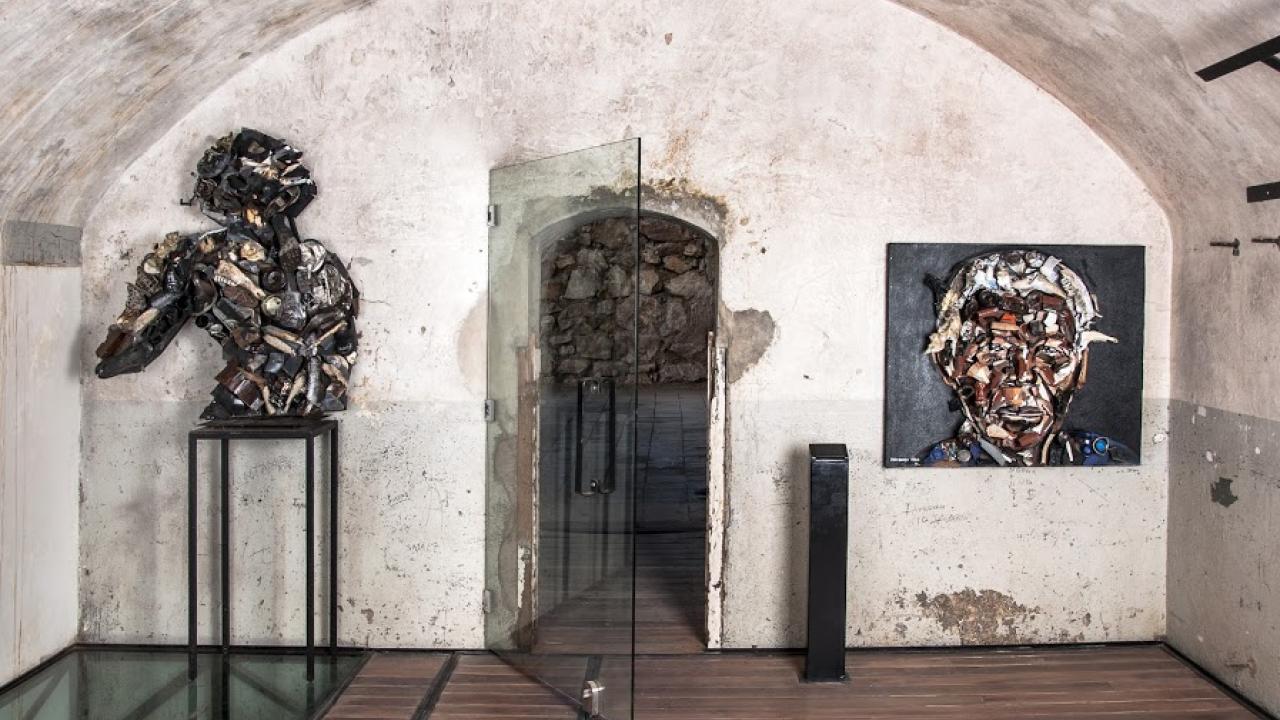
Student Organizes Controversial Art Show In South Africa
Matthew Nesvet, who is pursuing a doctorate in anthropology at UC Davis, studies organized crime and has been researching a syndicate that plunders gold mines in South Africa. But recently his attention has been on a controversial art show he organized in Johannesburg.
He and South African co-curator Asanda Madosi asked some of the country’s best-known artists to create work in answer to the question "Are apartheid and colonialism truly through and done?" The exhibition “Post Its #1” aims to challenge the meanings of “post” in post-apartheid and postcolonial South Africa.
“Like my syndicate informants, the artists who came together also have been told since the end of legal apartheid in 1994 that they must wait for change to come to the country,” said Nesvet, who for two years has been a research associate at the University of the Witwatersrand in Johannesburg. “There was great hope for rapid change after apartheid ended, but that hasn’t happened. Some people got very rich – most are still waiting.”
Public and community scholarship
Like many of his peers, Nesvet is engaged in scholarship and research that seeks to engage the public in an examination of social, economic and political structures and inequalities. The exhibition is part of his work in “publicly engaged scholarship,” as is making a documentary about the miners.
“The exhibition is an example of how UC Davis students are involved in major socially engaged arts internationally,” said Nesvet. “By asking this question about social life and politics to artists, this show does something that happens often at UC Davis – it pushes social research, and more generally, all kinds of research to engage with the public.”
Nesvet received funding for the project from the UC Collaboratory for Ethnographic Design, a UC-wide initiative and the UC Interdisciplinary Psychoanalytic Consortium.
Attention and controversy
The exhibition at the Constitution Hill Museum has attracted large crowds and positive response from the public and news media, along with negative criticism from the nation’s leaders and some of the press and public. Many of the artists make work that is harshly critical of the inequality and difficulty of life in South Africa and what they see as the inadequacy and corruption of the government's response. The artists created work specifically for the exhibition.
“These are some of the most important and socially engaged artists in South Africa today,” Nesvet said. “Their work is not designed to be displayed in living rooms, but to create social change. Gathering a group of people, who through their public arts practices are thinking about what I am investigating among the miners, is another way of engaging people about the politics of endlessness and waiting."
“UC Davis is at the forefront of publicly engaged scholarship across the disciplines,” said Nesvet. “That’s what this exhibition does: draws in artists, performers, my co-curators and museum publics to collectively explore how the past shapes the present in South Africa and elsewhere and to collectively challenge the notion that the past is firmly in the past. This is an idea funded and cultivated in California and at the UC and UC Davis even though the exhibition is three-quarters of the way around the world.”
There are plans to create versions of “Post Its #1” in the United States and Germany.
— Jeffrey Day, content strategist in the UC Davis College of Letters and Science
